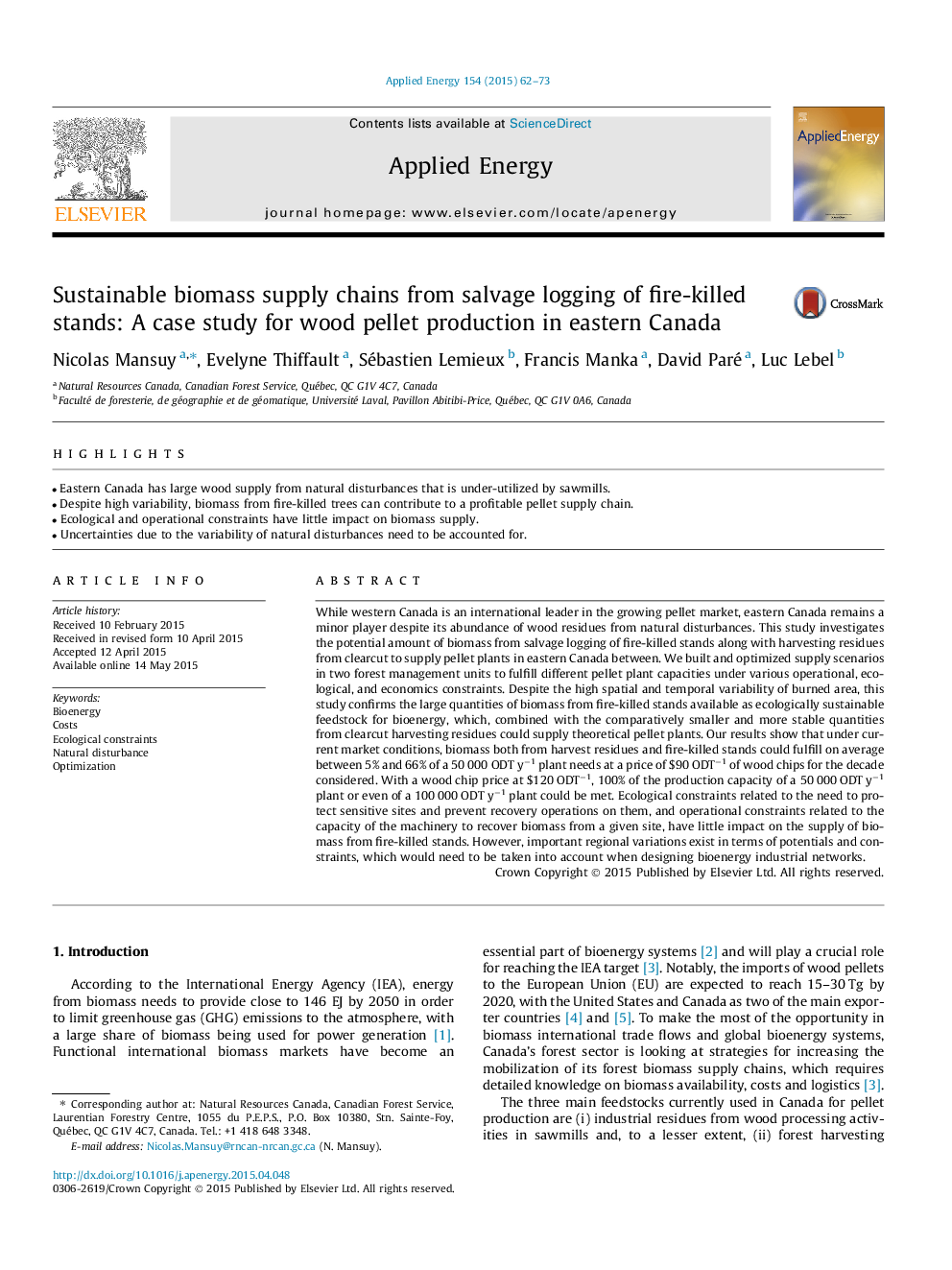| Article ID | Journal | Published Year | Pages | File Type |
|---|---|---|---|---|
| 6686802 | Applied Energy | 2015 | 12 Pages |
Abstract
While western Canada is an international leader in the growing pellet market, eastern Canada remains a minor player despite its abundance of wood residues from natural disturbances. This study investigates the potential amount of biomass from salvage logging of fire-killed stands along with harvesting residues from clearcut to supply pellet plants in eastern Canada between. We built and optimized supply scenarios in two forest management units to fulfill different pellet plant capacities under various operational, ecological, and economics constraints. Despite the high spatial and temporal variability of burned area, this study confirms the large quantities of biomass from fire-killed stands available as ecologically sustainable feedstock for bioenergy, which, combined with the comparatively smaller and more stable quantities from clearcut harvesting residues could supply theoretical pellet plants. Our results show that under current market conditions, biomass both from harvest residues and fire-killed stands could fulfill on average between 5% and 66% of a 50Â 000Â ODTÂ yâ1 plant needs at a price of $90Â ODTâ1 of wood chips for the decade considered. With a wood chip price at $120Â ODTâ1, 100% of the production capacity of a 50Â 000Â ODTÂ yâ1 plant or even of a 100Â 000Â ODTÂ yâ1 plant could be met. Ecological constraints related to the need to protect sensitive sites and prevent recovery operations on them, and operational constraints related to the capacity of the machinery to recover biomass from a given site, have little impact on the supply of biomass from fire-killed stands. However, important regional variations exist in terms of potentials and constraints, which would need to be taken into account when designing bioenergy industrial networks.
Related Topics
Physical Sciences and Engineering
Energy
Energy Engineering and Power Technology
Authors
Nicolas Mansuy, Evelyne Thiffault, Sébastien Lemieux, Francis Manka, David Paré, Luc Lebel,
